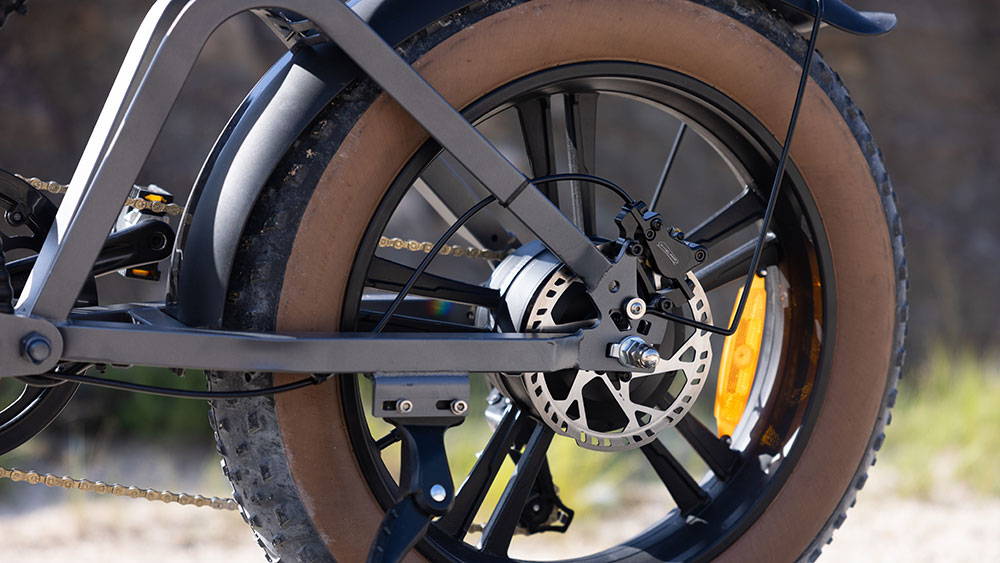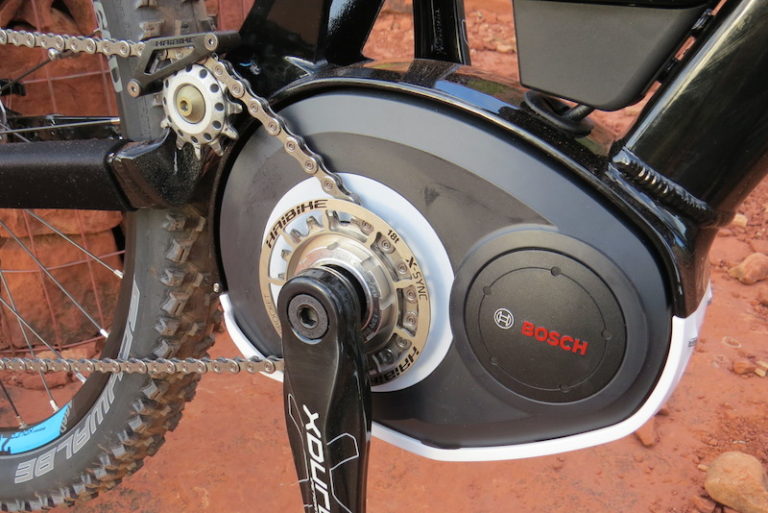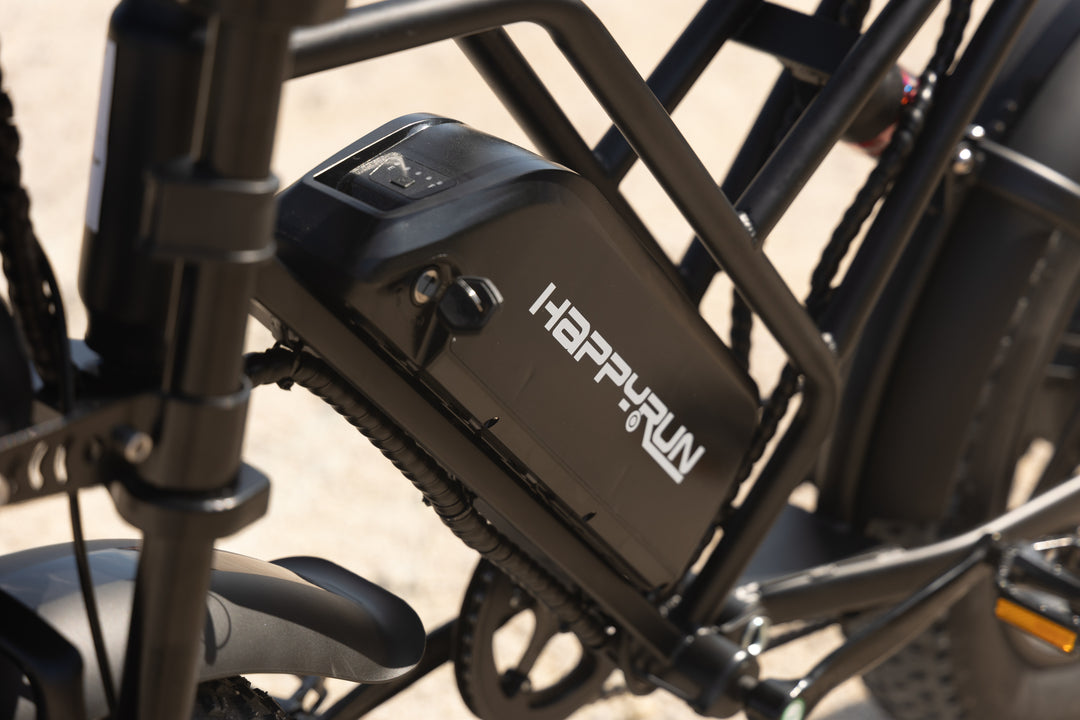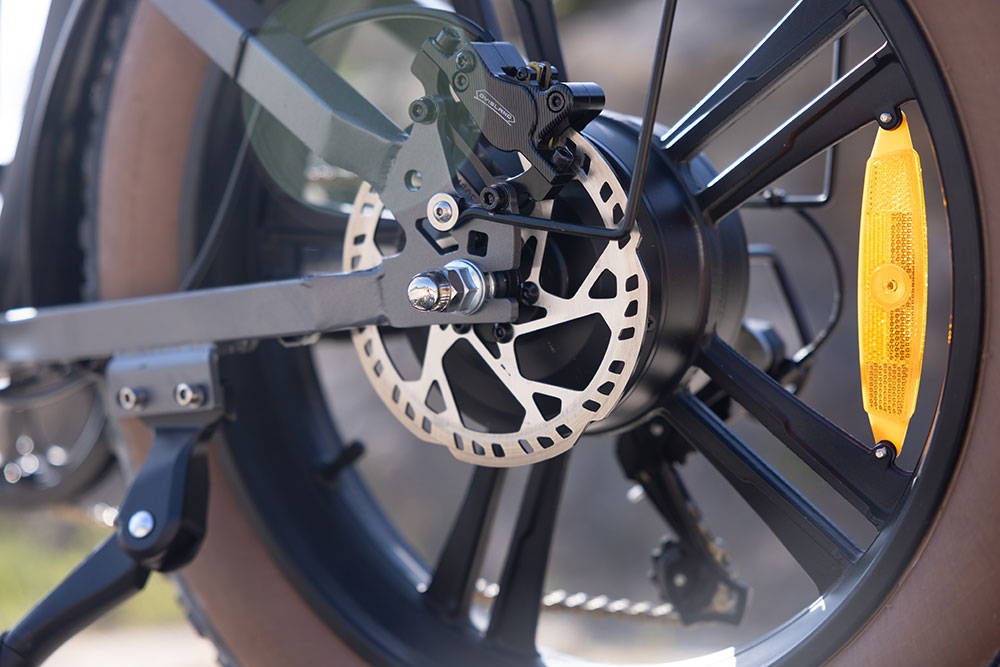
All About Electric Bike Motors: A Comprehensive Guide
Learn how the best electric mountain bikes with full suspension work
Electric bike motors are essential components that determine the performance, speed, and efficiency of e-bikes. Understanding the different types of electric bike motors, how they work, and their advantages can help you make an informed decision when purchasing an e-bike. This comprehensive guide covers everything you need to know about electric bike motors.
Electric bike motors are the beating heart of every pedal ebike, providing the power needed to transform a regular bicycle into an eco-friendly and efficient mode of transportation.
Understanding these motors is essential for anyone considering the purchase of an electric bike or seeking to enhance their existing commuter ebike. In this comprehensive guide, we'll delve deep into the world of electric bike motors, exploring the various types, their functions, and how they impact your electric bike riding experience.
The Heart of an Electric Bike - The Motor
At the core of every electric bike is the motor, a vital component that sets eBikes apart from their conventional counterparts. While traditional bicycles rely solely on human pedaling power, commuter ebikes integrate an electric motor to provide assistance and propel the bike forward.
This transformative technology not only extends the range of cycling but also makes it accessible to a broader audience, including those who may have physical limitations.
Electric bike motors serve as the powerhouse of an eBike, capable of delivering varying levels of power and performance. The type of motor you choose can significantly influence your riding experience, making it crucial to understand the options available and their respective advantages.
HappyRun’s high-quality adult electric bicycles feature a powerful motor that will make your riding journey one for the books.
If you’re wondering how do electric bikes work, keep on reading to learn more about their electric motors.
How Do E-Bike Motors Work?
E-bike motors provide power assistance to the rider, enhancing pedaling efficiency. They operate by drawing energy from a rechargeable battery and converting it into mechanical power. When the rider pedals or uses a throttle, sensors detect input and adjust motor output accordingly, allowing for a smoother and more enjoyable riding experience.
This process involves several components:
- Motor Type: The type of motor (hub or mid-drive) influences how power is delivered to the wheels.
- Sensors: Many e-bikes feature sensors that detect pedaling force or speed, allowing the motor to provide appropriate assistance.
- Controller: The controller manages power delivery from the battery to the motor based on input from sensors.
This synergy between components ensures a smooth riding experience, adapting to different terrains and rider inputs.
What Are the Different Types of E-Bike Motors?
The two main types of e-bike motors are hub motors and mid-drive motors. Hub motors are located in the wheel hub, providing direct propulsion, while mid-drive motors are positioned at the bike’s bottom bracket, delivering power through the bike’s chain. Each type offers distinct advantages and is suited for different riding styles.
- Hub Motors: Located in either the front or rear wheel hub, these motors drive the wheel directly.
- Mid-Drive Motors: Positioned at the bike’s bottom bracket, these motors drive the chain and provide power through the bike’s gears.
Understanding these types helps riders select a motor that best fits their riding style and needs. Let's explore the two primary motor types commonly used in pedal ebikes:
1. Hub Motors - Power at the Wheel
Hub motors, as the name suggests, are located within the wheel hub of the electric road bike, either in the front or rear wheel. These motors are known for their simplicity and ease of installation, making them a popular choice among ebike manufacturers.

HappyRun Electric Bike Motor
Pros of Hub Motors:
- Simplicity: Hub motors have fewer moving parts, reducing the likelihood of mechanical issues.
- Ease of Installation: Hub motors can be retrofitted to many existing bicycles with minimal modifications.
- Quiet Operation: They operate silently, offering a stealthy riding experience.
- Lower cost compared to mid-drive systems.
- Less maintenance required due to fewer moving parts.
Cons of Hub Motors:
- Reduced Efficiency: Hub motors are less efficient at converting electrical power into forward motion compared to mid-drive motors.
- Weight Distribution: Placing the motor in the wheel hub can affect the eBike's weight distribution, potentially compromising handling.
- Limited performance in hilly terrain.
- Can be less efficient than mid-drive systems in terms of energy use.
2. Mid-Drive Motors - A Pedal-Forward Approach
Mid-drive motors are positioned in the electric road bike’s frame near the bottom bracket, where the pedals are connected. This central location allows the motor to directly assist the rider's pedaling efforts, resulting in improved efficiency and performance.

Mid-Drive Motors By Electricbikereport
Pros of Mid-Drive Motors:
- Efficient Power Transfer: Mid-drive motors leverage the bike's gears, delivering power efficiently and excelling on inclines.
- Balanced Weight: The central motor placement provides better weight distribution, enhancing overall stability and handling.
- Optimized Torque: Mid-drive motors offer high torque, making them ideal for off-road and hilly terrain riding.
- Superior climbing ability due to higher torque output.
- Better overall efficiency by using gears effectively.
Cons of Mid-Drive Motors:
- Higher initial cost and maintenance requirements.
- Potentially more complex repairs due to integrated systems.
How Do Hub Motors Compare to Mid-Drive Motors?
Hub motors provide a straightforward design with less maintenance and are typically easier to install. They excel in flat terrain but may struggle on steep hills. Mid-drive motors offer better torque and efficiency on inclines, utilizing the bike’s gears for improved performance but require more maintenance due to their complexity.
| Feature | Hub Motors | Mid-Drive Motors |
|---|---|---|
| Advantages | – Simple design, easy to install. | – Better weight distribution for improved handling. |
| – Generally quieter operation. | – Higher torque for climbing steep inclines. | |
| – Requires less maintenance. | – More efficient use of battery power with gears. | |
| Disadvantages | – Heavier weight can affect bike balance. | – More complex installation; may require specialized tools. |
| – Limited torque for climbing steep hills. | – Increased wear on chain and gears due to higher power input. | |
| Performance | – Smooth on flat terrain, less natural feel on hills. | – Natural feel excels on hills, mimicking traditional cycling. |
| Maintenance | – Low maintenance due to fewer moving parts. | – More maintenance required due to complexity. |
| Cost | – Generally less expensive than mid-drive motors. | – Typically more expensive due to complexity and integration. |
Understanding these differences can help riders choose based on their specific needs.
How Does Motor Position Affect Performance?
Motor position affects performance by influencing weight distribution and handling. Mid-drive motors provide a balanced feel, enhancing stability during climbs and descents. In contrast, hub motors can create a rear-heavy balance, which may affect maneuverability. Additionally, mid-drive systems utilize gearing for improved torque on inclines.
- Hub-Mounted Motors: Provide a straightforward power delivery system but may struggle with steep inclines or rough terrain due to limited torque.
- Mid-Mounted Motors: Offer better balance and handling while providing greater torque for climbing hills, making them ideal for varied terrains.
Choosing a motor position that suits your riding style can enhance your overall experience on an e-bike.
Electric Bike Motor Performance Factors
Understanding electric bike motors goes beyond knowing their types. To make an informed choice, it's essential to grasp the key performance factors that define a motor's capabilities.
One of the most critical performance factors is motor power, typically measured in watts (W). Motor power dictates how much assistance the motor provides when you pedal. In general, higher-wattage motors offer more power, resulting in faster acceleration and better performance on steep hills.
However, it's essential to strike a balance between power and battery efficiency to ensure a satisfactory riding experience.
Torque is another crucial factor to consider. Torque represents the rotational force produced by the motor, and a motor with higher torque can better handle challenging terrain, including steep hills and rough trails. When choosing an electric bike motor, evaluating the motor's torque capabilities is essential, especially if you plan to ride in hilly or off-road environments.
Efficiency plays a significant role in determining the motor's overall performance. It measures how effectively the motor converts electrical power into forward motion.
Highly efficient motors not only extend your ebike range but also ensure that you get the most out of your battery. Efficient motors also generate less heat, contributing to their longevity and reliability.
Heat management is a critical aspect of electric bike motors, as excessive heat can lead to performance degradation and potential damage. Quality motors are designed with effective heat dissipation mechanisms to keep the motor operating within its optimal temperature range. This feature helps maintain consistent performance and prolong the motor's lifespan.
How Do Battery and Motor Work Together?
The battery supplies energy to the motor, enabling it to assist with pedaling. The motor’s power output is controlled by sensors that detect rider input through pedals or throttle. A compatible battery capacity ensures sufficient range for desired rides while maintaining optimal performance levels from the motor throughout its use.
The battery is a crucial component that powers the motor in an electric bike:
- Power Output: The battery’s voltage and amp-hour rating determine how much power it can deliver to the motor, impacting speed and range.
- Compatibility: Ensure that your battery is compatible with your motor type; mismatched components can lead to inefficiencies or damage.
- Energy Management: Advanced systems use smart controllers that optimize power delivery based on rider input, terrain, and battery status, enhancing performance.
Understanding this relationship is vital for maximizing your e-bike’s capabilities.


Electric Bike Motor & Battery
Legal Considerations and Regulations
Understanding the legal framework surrounding electric bikes is essential for responsible riding. Top rated electric bike regulations can vary significantly by region, with classifications based on motor power, maximum speed, and other criteria. It's essential to familiarize yourself with the regulations that apply to your area to ensure that you comply with local laws.
Moped style ebike regulations often classify electric bikes into different classes or categories based on motor power output, maximum speed, and whether the bike offers pedal-assist or throttle-controlled operation. These classifications can affect where and how you can ride your eBike, as well as any safety requirements, such as helmet use.
Riding a moped style ebike that exceeds legal limits or is not classified correctly can result in fines or legal consequences. Responsible fat tire ebike ownership includes staying informed about the rules that apply to your area and adhering to them. By following local regulations, you can enjoy the benefits of electric bike riding while ensuring your safety and compliance with the law.
What Should You Know About Motor Brands?
Several reputable brands dominate the e-bike motor market:
- Bosch: Known for reliability and performance; offers a range of mid-drive motors for various applications.
- Bafang: A popular choice for both hub and mid-drive systems; recognized for robust performance at competitive prices.
- Shimano: Offers lightweight mid-drive systems that excel in mountain biking scenarios; known for smooth integration with their drivetrains.
Familiarizing yourself with different brands can help you identify quality options when selecting an e-bike.
Choosing the Right Electric Bike Motor
Selecting the perfect electric bike motor requires careful consideration of your riding needs, preferences, and goals. Here are some steps to guide you through the process:
Determine Your Riding Style
Consider where and how you plan to use your moped style ebike. Do you primarily ride in the city, tackle off-road trails, or both? Your riding style will influence the motor type and power you need.
Evaluate Terrain
Assess the terrain you'll encounter regularly. If you frequently ride on steep hills or rugged terrain, prioritize a motor with high torque to handle these challenges effectively.
Set a Budget
Determine your budget for a fat tire ebike, considering not only the motor but also other components like the battery and frame. Balancing your budget with your performance expectations is essential.
Seek Expert Advice
Consult with top rated electric bike experts or visit a reputable eBike dealer for guidance on motor selection. Experienced professionals can provide valuable insights and recommendations based on your individual needs.
Buying Tips
When purchasing an electric bike, consider your riding style, terrain preferences, and budget when selecting a motor type. If you plan on tackling steep hills or varied terrain, opt for a mid-drive motor for better performance. For casual riding on flat surfaces, a hub motor may suffice. Brands like HappyRun, known for their commitment to quality since 2014, offer reliable options across various price points and specifications.
E-Bike Expert Views
“Choosing the right e-bike motor is crucial for optimizing your riding experience,” says biking expert Jane Doe. “Consider how you plan to use your e-bike—whether for commuting or off-road adventures—to select a motor that meets your needs.”
Final Words
Electric bike motors are the powerhouse behind the electric bike revolution, enabling riders to experience enhanced performance, extended range, and an eco-friendly commute.
Understanding the intricacies of electric bike motors empowers you to make informed decisions when purchasing an electric bicycle or customizing your existing one.
If you’re looking for the best electric bikes that look like motorcycles, HappyRun is the go-to place for you.
































Leave a comment